 |
Winter Park |
 |
Code of Ordinances |
 |
Chapter 40. COMMUNICATIONS SYSTEMS |
 |
Article IV. COMMUNICATIONS FACILITIES IN PUBLIC RIGHTS-OF-WAY |
§ 40-100. Notice of transfer, sale or assignment of assets in public rights-of-way.
If a registrant transfers, sells or assigns its assets located in public rights-of-way incident to a transfer, sale or assignment of the registrant's assets, the transferee, buyer or assignee shall be obligated to comply with the terms of this article. Written notice of any such transfer, sale or assignment shall be provided by such registrant to the city within 20 days after the effective date of the transfer, sale or assignment. If the transferee, buyer or assignee is a current registrant, then the transferee, buyer or assignee is not required to re-register. If the transferee, buyer or assignee is not a current registrant, then the transferee, buyer or assignee shall register as provided in section 40-84 above, within 60 days of the transfer, sale or assignment. If permit applications are pending in the registrant's name, the transferee, buyer or assignee shall notify the public works department that the transferee, buyer or assignee is the new applicant.
(Ord. No. 3075-17 , § 7, 4-24-17)
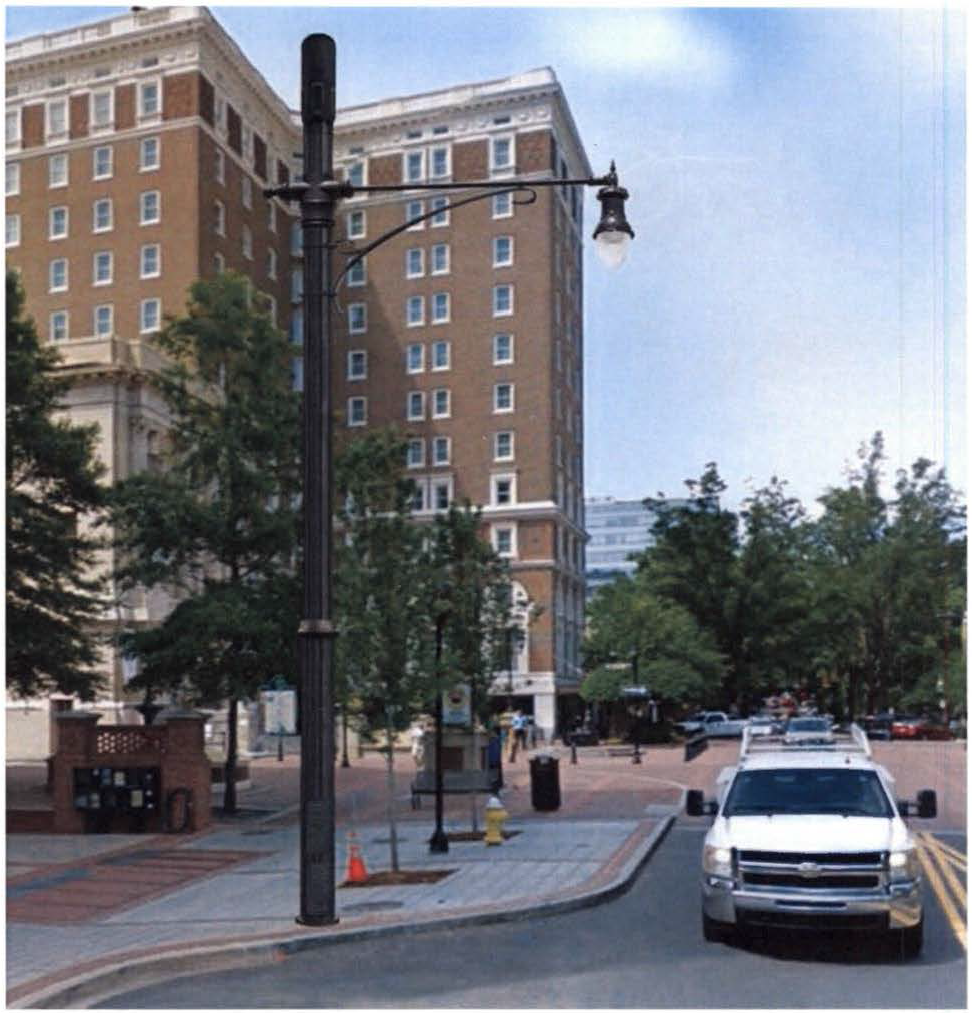
Exhibit 1. Simulated fluted pole to be manufactured by Nepsa with capacity for two internal, collocated wireless antennas. Decorative mast arm and down lighting luminaire by Sternberg Lighting, the manufacturer of the City's decorative lights. This would be an acceptable design with an arm that matched the design of the city's existing decorative lights; however, the pole's location, mere inches from the curb, would violate the eight-foot clear space requirement from the curb or edge of pavement. The light pole design may also be acceptable on certain streets with double mast arms matching the design of the city's existing decorative lights and down lighting luminaires by Sternberg mirroring one other.
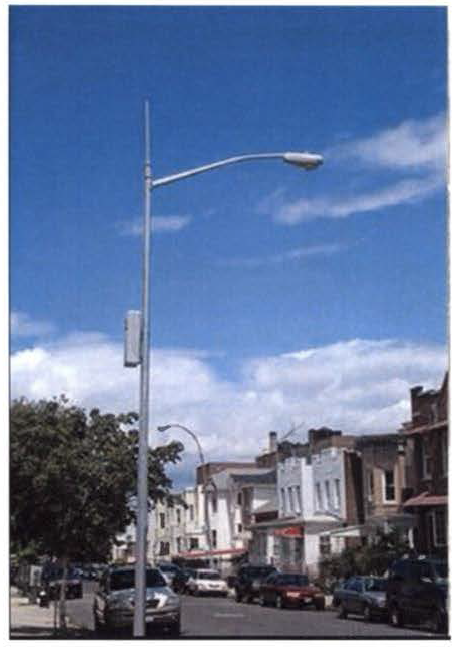
Exhibit 2. The antenna is narrower than, and in scale with the pole. This may be an acceptable design for a cobra-style light fixture; however, the city is transitioning from cobra lights to decorative lights. The applicant would need to remove its wireless facility within 30 days upon notice that the city will replace the light pole and fixture.
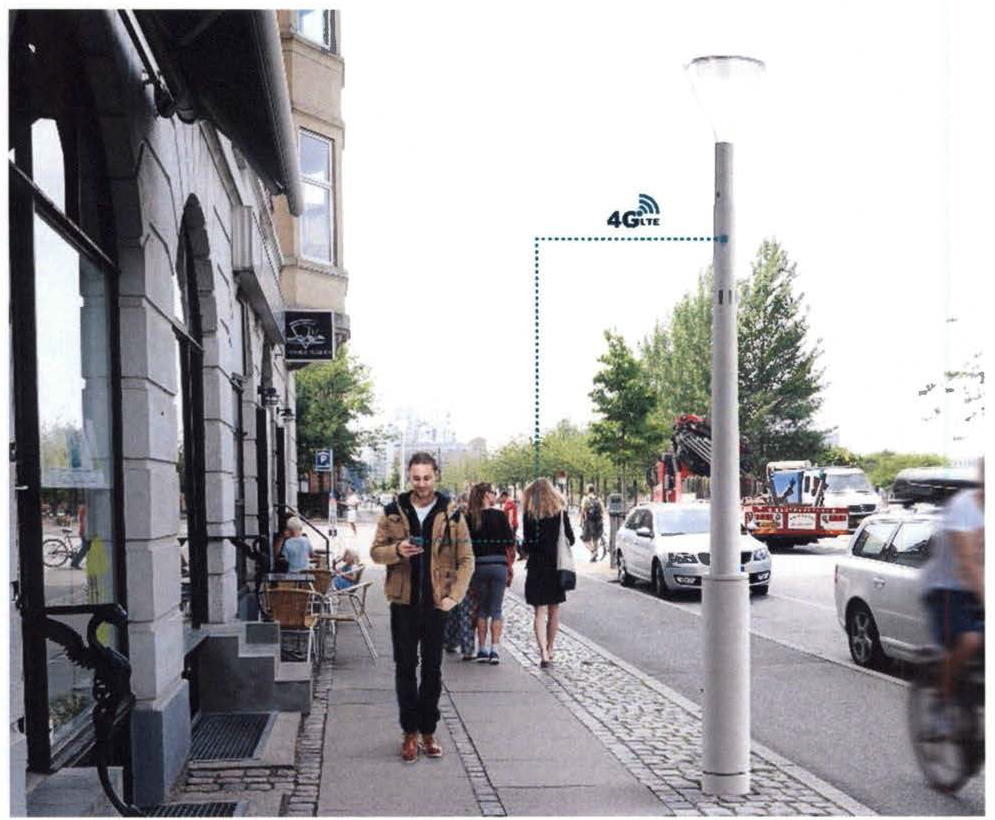
Exhibit 3. An antenna incorporated into, and hidden in the pole of top mounted, pedestrian scaled light may be acceptable if painted black, featured an acorn luminaire, and otherwise substantially resembled the acorn light fixtures already existing in the city. The photo depicts a Philips pole with internal Ericsson antennas.
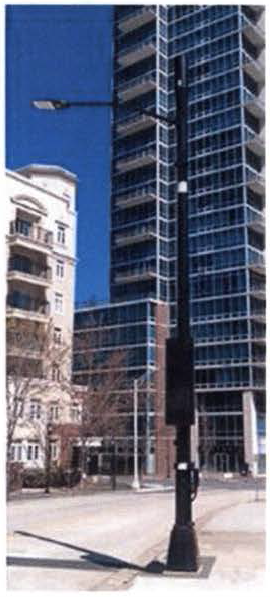
Exhibit 4. The antenna, by Valmont, is painted black to blend-in with the pole and is in scale with the pole base. The arm is within the top 15—20 percent of the pole height, appearing in balance. This may be an acceptable design if the pole otherwise resembled the city's decorative pole features.
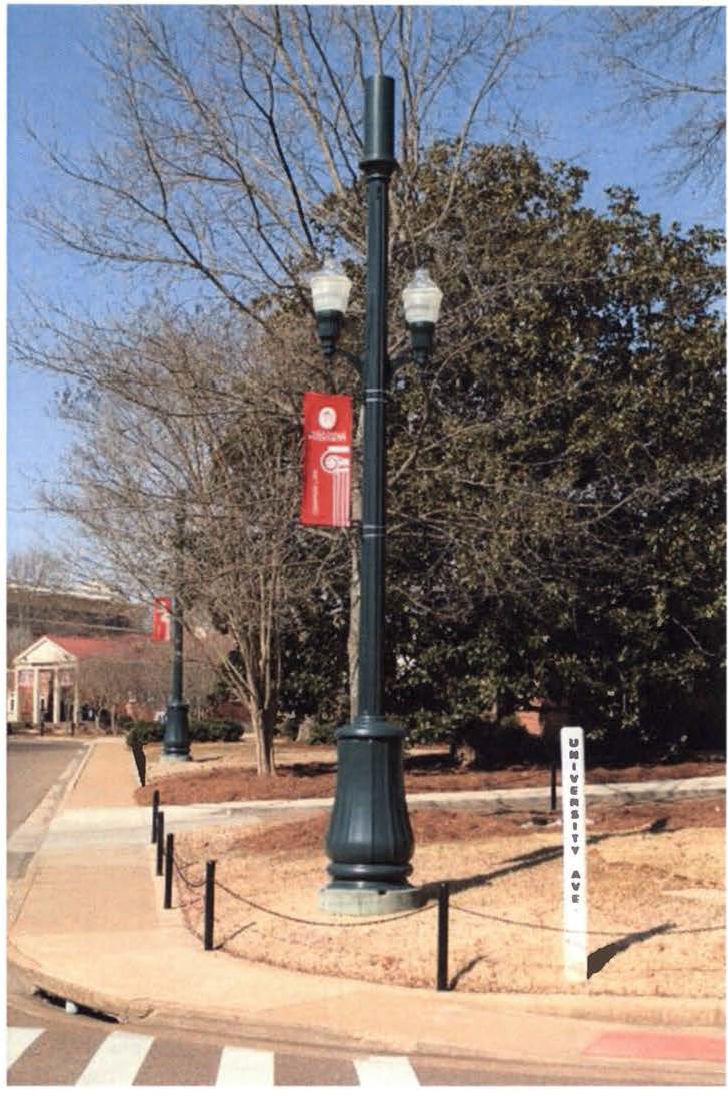
Exhibit 5. The base is out-of-scale to the arms and luninaires. In addition, while symmetrical, the pole and antenna extend far above the luminaires, making the design appear vertically out of proportion. Arms and luminaries should be within the top 2 percent of the pole height. This design is prohibited; however, a similar design may be acceptable with appropriate modifications.
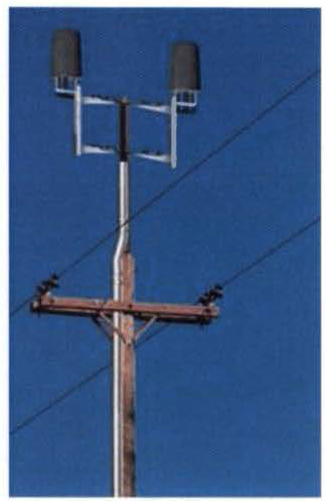
Exhibit 6. Wireless facilities over, or within 20 feet of energized wires are prohibited.
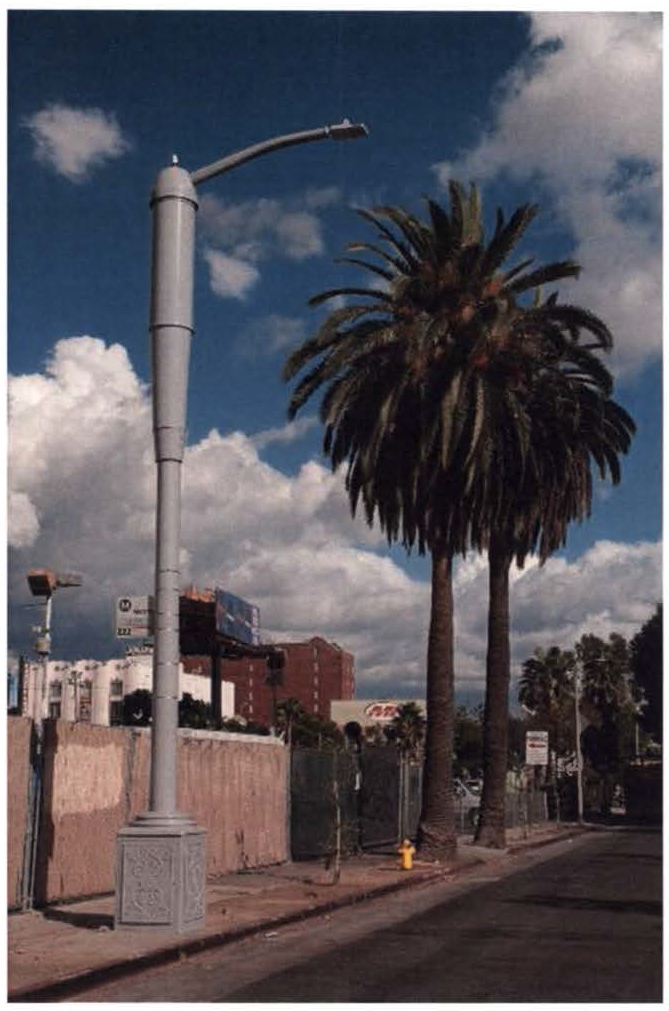
Exhibit 7. The antenna enclosure has a larger diameter than the pole, rendering it insufficiently cloaked. This design is prohibited.
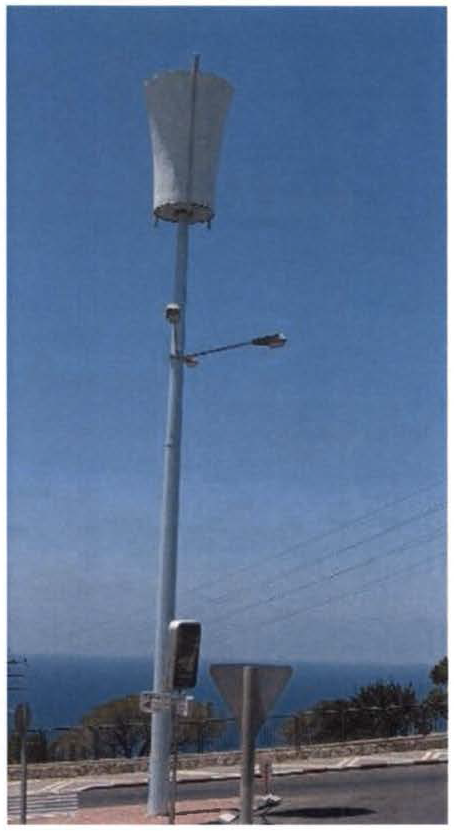
Exhibit 8. The antenna is wider than, and out-of-scale to the pole. This design is prohibited.
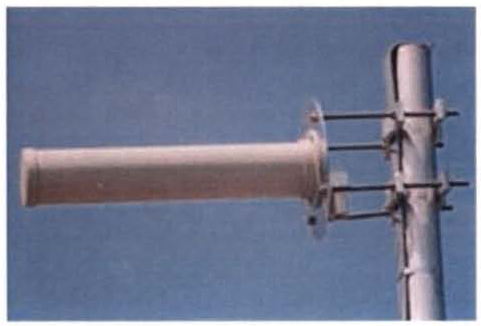
Exhibit 9. The antenna extends horizontally from the pole. This design is prohibited.
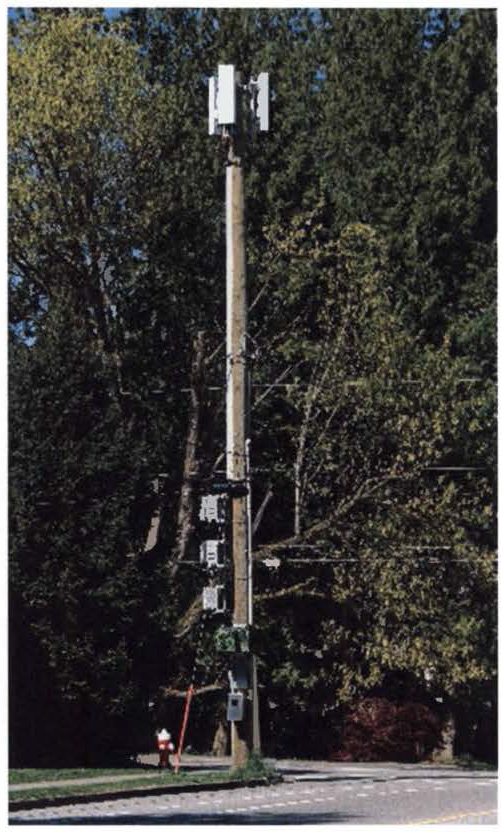
Exhibit 10. Wooden poles are prohibited. The city is transitioning away from wooden poles. In addition, the top-mounted antennas extend on arms away from the pole. This design is prohibited.
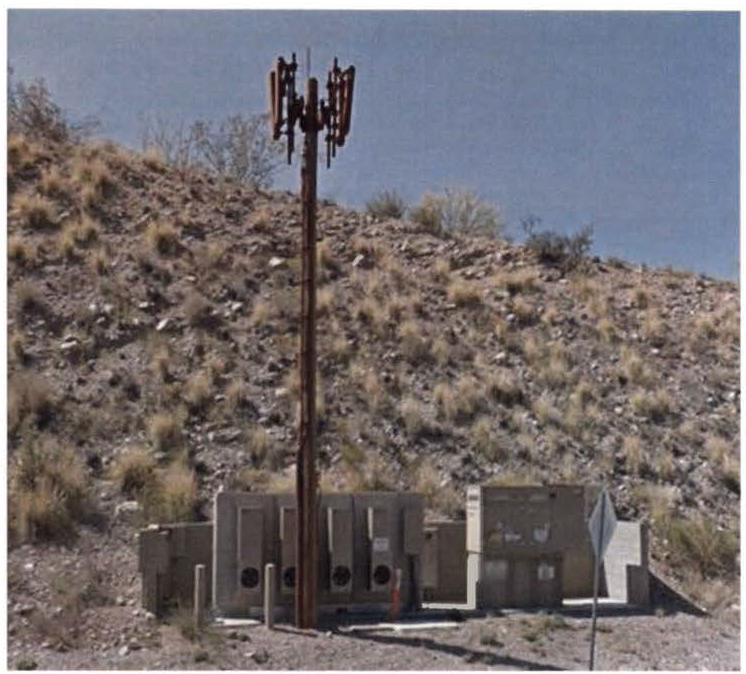
Exhibit 11. Antennas on arms are prohibited.
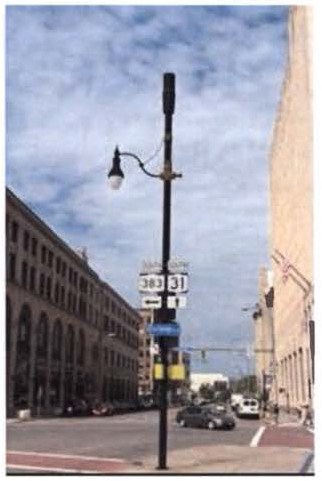
Exhibit 12. The pole lacks a base in scale to the volume of the antenna, which is larger than the diameter of the pole and does not appear to be an original part of the pole. This design would be prohibited.
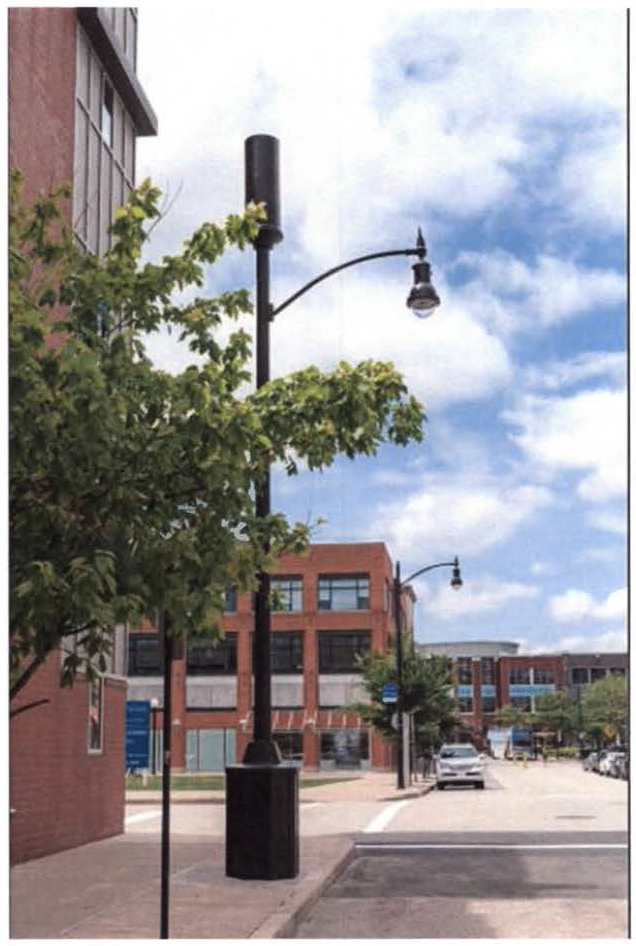
Exhibit 13. The base is out-of-scale to the size of the luminaire. In addition, the antenna is larger than the pole diameter and does not look like an original part of the pole. This design would be prohibited.
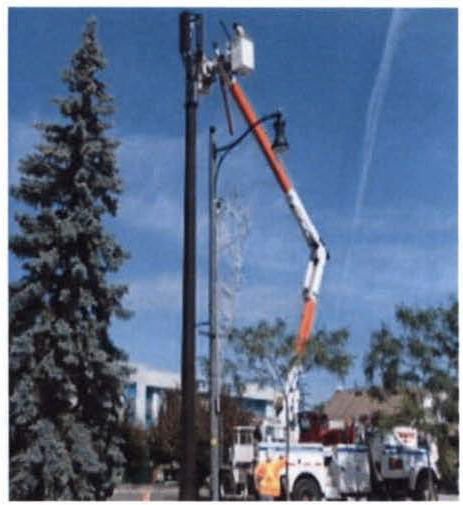
Exhibit 14. The location context for this small cell monopole is not reasonable because it creates a cluttered appearance. In addition, the antenna is larger than the diameter of the pole, lacks of pole base of comparable volume, and is vertically out-of-scale to the existing streetlights.